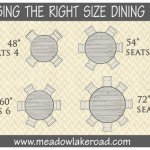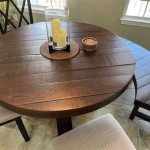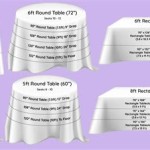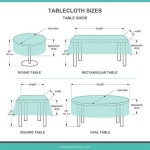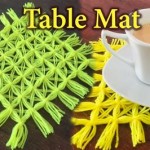A Guide To Purchasing Gray Round Dining Tables In Atlanta
The selection of a dining table for a home represents a significant investment, impacting both the functionality and aesthetics of the dining space. In Atlanta, where diverse architectural styles and interior design preferences converge, the gray round dining table has emerged as a popular choice. Its versatility allows it to seamlessly integrate into various design schemes, from modern minimalist to traditional and transitional spaces. This guide provides a comprehensive overview of factors to consider when purchasing a gray round dining table in the Atlanta area.
Assessing Space and Determining Appropriate Size
Before embarking on the purchasing process, a careful assessment of the available dining space is crucial. Square footage must be accurately measured to ensure that the chosen table fits comfortably without overwhelming the room. The ideal size of a round dining table is directly related to the number of individuals who will regularly use it. A general guideline suggests allocating approximately 24 inches of linear space per diner. This allows for comfortable seating and adequate elbow room.
For smaller dining areas, a round table with a diameter between 36 and 48 inches is often sufficient to accommodate two to four people. For a larger family or those who frequently entertain, a table with a diameter of 54 to 60 inches may be more appropriate, comfortably seating four to six individuals. Extending tables, which can be enlarged with leaves, provide flexibility for accommodating larger gatherings. When considering an extending table, it is important to measure the space needed when the table is fully extended to guarantee it will fit the available area.
In addition to the table's dimensions, consider the space needed for chairs and traffic flow around the table. A minimum of 36 inches of clearance between the table and walls or other furniture is recommended to allow for comfortable movement. This clearance ensures that individuals can easily pull out chairs and navigate around the dining area without obstruction. Proper measurement and planning are essential for selecting a table that optimizes both functionality and visual appeal.
Furthermore, the shape of the room should influence table size selection. While a round table typically works well in square or symmetrical rooms, it can also be strategically placed in smaller, oddly shaped spaces to maximize usable area. In open-concept living areas, a round table can delineate the dining space while maintaining a sense of openness and flow.
Material Selection and Durability Considerations
The material composition of a gray round dining table directly impacts its durability, aesthetics, and maintenance requirements. A variety of materials are commonly used in the construction of dining tables, each possessing unique characteristics. Solid wood, particularly hardwoods such as oak, maple, and walnut, is renowned for its strength, longevity, and natural beauty. Solid wood tables offer a timeless appeal and can be refinished to adapt to evolving design preferences. Consider the wood grain and finish when selecting a solid wood table to complement the existing decor.
Veneered wood offers a more cost-effective alternative to solid wood. Veneer consists of a thin layer of hardwood adhered to a substrate, such as plywood or particleboard. While veneered tables offer a similar aesthetic to solid wood, they are generally less durable and may be more susceptible to damage from moisture or excessive wear. However, high-quality veneered tables can provide a durable and attractive option for budget-conscious consumers.
Metal tables, often featuring steel or aluminum frames, offer a sleek and modern aesthetic. Metal tables are known for their durability and resistance to scratching and staining. They are particularly well-suited for contemporary dining spaces and can be paired with a variety of chair styles. Glass-top tables provide a light and airy feel, enhancing the sense of space in smaller dining areas. Tempered glass is a durable and safe option for dining tables, as it resists shattering. However, glass tables require regular cleaning to maintain their pristine appearance.
The finish applied to the table surface also plays a significant role in its durability and maintenance. Protective finishes, such as polyurethane or lacquer, provide a barrier against scratches, stains, and moisture damage. Matte finishes offer a subtle and understated look, while gloss finishes provide a more reflective and polished appearance. Consider the level of maintenance required for different finishes when making a selection. A durable and easy-to-clean finish will ensure that the table retains its beauty and functionality for years to come. Regular cleaning and maintenance, such as wiping up spills promptly and using coasters, will extend the lifespan of the dining table.
Evaluating Style and Color Palette Compatibility
The style of a gray round dining table should complement the overall aesthetic of the dining space. Gray is a versatile color that can be incorporated into a wide range of design styles, from modern and minimalist to traditional and rustic. When selecting a table, consider the existing furniture, wall colors, and flooring to ensure a cohesive and harmonious look.
For modern dining spaces, a gray table with clean lines and a minimalist design is often an ideal choice. Metal accents and geometric shapes can further enhance the contemporary aesthetic. In traditional dining rooms, a gray table with ornate details and a darker shade of gray can create a sense of elegance and sophistication. Consider tables with carved legs, pedestal bases, or decorative aprons to complement the traditional style. Transitional dining spaces blend elements of both modern and traditional design, allowing for a greater degree of flexibility in table selection. A gray table with a simple yet elegant design can seamlessly integrate into a transitional dining room. The specific shade of gray can also be tailored to the overall color palette of the space.
The color palette of the dining room should influence the selection of the gray shade for the table. Light grays, such as dove gray or silver gray, can create a bright and airy feel, while darker grays, such as charcoal gray or slate gray, can add depth and drama to the space. Consider the undertones of the gray shade to ensure that it complements the other colors in the room. Warm grays, with hints of brown or beige, work well with earth tones and natural materials, while cool grays, with hints of blue or green, complement cooler color schemes. Paint samples can be compared against the table finish in natural light to determine the most harmonious color combination. Consider the lighting in the dining room and how it will affect the appearance of the gray table. Natural light will enhance the warmth and vibrancy of the color, while artificial light can alter its tone and intensity.
The chairs selected to accompany the gray round dining table should also complement the table's style and color. Upholstered chairs in a contrasting color or pattern can add visual interest to the dining space. Consider the height and style of the chairs to ensure that they are comfortable and proportional to the table. Armchairs can provide additional comfort and support, while armless chairs offer a more streamlined and space-saving option. The fabric or material of the chairs should be durable and easy to clean, particularly if the dining room is frequently used. Leather, velvet, and linen are popular choices for dining chairs, each offering a unique aesthetic and level of comfort. The overall design of the dining room should reflect a cohesive and well-thought-out aesthetic, with each element contributing to the overall ambiance of the space.
The surrounding decor elements, such as rugs, lighting fixtures, and artwork, should also be considered when selecting a gray round dining table. A rug placed beneath the table can define the dining space and add warmth and texture to the room. Lighting fixtures can enhance the ambiance of the dining area and provide adequate illumination for dining and entertaining. Artwork can add personality and visual interest to the walls, complementing the overall style of the room. By carefully considering all of these elements, it is possible to create a dining space that is both functional and aesthetically pleasing.

Modern Standard Height Round Dining Table In Medium Wood With Fixed A Slate Tabletop And Legs Ash For 4 51 2 L X W 29 5 H Turntable Not Included Without Chairs

Havertys Dovetail Grey 54 Inch Round Dining Table Blue Ridge

Coaster Darcy Pedestal Round Dining Table In Weathered Ash 123090 By Rooms

Blue Ridge Round Dining Table

Coaster Darcy Pedestal Round Dining Table In Weathered Ash 123090 By Rooms

Blue Ridge Round Dining Table

Blue Ridge Round Dining Table

Grosfillex Aquaba Classic Resin Zinc Ranch Round Outdoor Patio Dining Table With Umbrella Hole

Legacy Classic Camden Heights Dining Room Group

Camden Chestnut Extendable Dining Table The Dump Furniture
Related Posts

